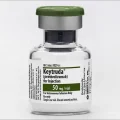Nasal spray highly effective against HIV and SARS-CoV-2 in animal models

Novel immunization strategies are needed to induce humoral immunity and systemic antibody responses at mucosal entry sites to protect individuals from newly emerged or existing pathogens. Many of these pathogens exhibit the potential to cause a pandemic, as has been demonstrated by the severe acute respiratory syndrome coronavirus 2 (SARS-CoV-2), which caused the coronavirus disease 2019 (COVID-19) pandemic, or trigger serious diseases like the human immunodeficiency virus (HIV).
 Study: Intranasal vaccination with lipid-conjugated immunogens promotes antigen transmucosal uptake to drive mucosal and systemic immunity. Image Credit: LuckyStep / Shutterstock.com
Study: Intranasal vaccination with lipid-conjugated immunogens promotes antigen transmucosal uptake to drive mucosal and systemic immunity. Image Credit: LuckyStep / Shutterstock.com
Background
Previous studies have reported that many pathogens such as rotavirus, cholera, influenza, HIV, and SARS-CoV-2 require both systemic and mucosal immune responses for their efficient management and protection. These immune responses can be induced using a combination of immunoglobulin A (IgA) and IgG.
At mucosal sites, secretory IgA (sIgA) is the primary humoral defense that provides protection through several mechanisms, including inhibition of transcytosis, immune exclusion, and direct neutralization of pathogens. The presence of antigen-specific sIgA at the mucosal site provides the first line of defense against mucosal simian-human immunodeficiency virus (SHIV) in primates.
Clinical studies have also provided strong evidence that mucosal IgA provides significant protection against SARS-CoV-2, which primarily infects upper and lower respiratory mucosa cells.
Conventional parenteral immunization does not trigger sufficient mucosal immunity. Comparatively, vaccination at the mucosal surfaces elicits immune responses in mucosa-associated lymphoid tissues (MALTs), which can protect individuals from various viruses. Notably, mucosal T and B lymphocyte priming occurs in MALT inductive sites, such as gut-associated lymphoid tissue (GALT) and nasal-associated lymphoid tissue (NALT).
One of the key challenges associated with mucosal vaccines is the delivery of vaccine components across mucosal barriers. Restricted uptake of vaccines in mucosal immune sites occurs due to many factors, including elevated mucociliary clearance, rapid antigen loss due to degradation by acidic conditions and proteolytic enzymes at mucosal surfaces, as well as the inability of the epithelial monolayer to uptake vaccines at the tight junctions.
Previous studies have shown that important modifications in the pharmacokinetic behavior of vaccine components can be achieved by conjugating peptides or Toll-like receptor agonist adjuvants to an amphiphilic albumin-binding lipid tail (amph-vaccine).
About the study
A new Science Translational Medicine study hypothesized that albumin-binding amph-vaccines might enable the neonatal Fc receptor (FcRn)-mediated vaccine uptake across the nasal mucosa.
One key advantage of this strategy is the high possibility of a large concentration of antigens reaching NALTs. Furthermore, it is possible that this approach allows for membrane tethering of amph-immunogens to enhance the availability of antigens in NALTs and nasal sites to subsequently allow for local immune priming.
This vaccination method also efficiently bypasses systemic dissemination of antigens away from the site of action of locally co-administered mucosal adjuvants. Taken together, these mechanisms have the potential to generate robust mucosal and systemic immunity.
In the current study, the researchers evaluate the effect of modifying protein antigens on systemic and mucosal immune responses triggered by intranasal vaccination in small and large animal models. The protein antigens were modified using an amphiphilic polyethylene glycol (PEG)-lipid tail.
Mice and non-human primates were vaccinated with clinically applicable subunit protein immunogens, along with saponins or other adjuvants. The early local response was determined by analyzing T-cell priming, antigen uptake, and germinal center (GC) induction. Later immune responses were assessed using plasma cells, as well as serum and mucosal antibodies.
The underlying mechanisms associated with systemic and mucosal immune responses induced by intranasal vaccination were assessed using fluorescently labeled proteins enabling immunogen.
Study findings
As compared to unmodified antigens or free proteins, amph-protein immunogens exhibited an enhanced degree of persistence and uptake across the nasal mucosa that promoted elevated follicular helper T-cell (Tfh) and GC responses in the NALT.
Intranasal immunization with amph-conjugated HIV Env gp120 or SARS-CoV-2 receptor binding domain (RBD) proteins triggered the production of neutralizing antibodies. As compared to unmodified proteins, amph-protein immunogens induced 100- to 1,000-fold higher antigen-specific IgG and IgA titers in the serum, distal genitourinary mucosae, and upper and lower respiratory mucosa of mice.
Furthermore, amph-RBD vaccination elicited elevated neutralizing antibody titers against SARS-CoV-2 in mice. A high level of antibodies was also observed in bronchoalveolar lavage, serum, and nasal washes.
Rhesus macaques immunized intranasally with amph-protein similarly exhibited a high concentration of antigen-specific IgG and IgA responses that were about 10-times higher in the serum and nasal mucosa as compared to unmodified proteins.
Thus, intranasal amph-protein immunization was capable of eliciting a high concentration of systemic and nasal IgG and IgA responses in non-human primates. However, unlike amph-protein immunized mice, the non-human primate model did not exhibit distal mucosal responses in the vagina and rectum. This could be prevented with the proper utilization of adjuvants.
Conclusions
One of the limitations of the study is the immunological difference that exists between animal models and humans. However, the study findings strongly indicate that intranasal delivery of amph-protein vaccines could be a potential approach to elicit a mucosal immune response against many infectious diseases, including those caused by HIV and SARS-CoV-2.
- Hartwell, L. B., Melo, M. B., Xiao, P., et al. (2022) Intranasal vaccination with lipid-conjugated immunogens promotes antigen transmucosal uptake to drive mucosal and systemic immunity. Science Translational Medicine 14(654). doi:10.1126/scitranslmed.abn1413.
Posted in: Drug Discovery & Pharmaceuticals | Medical Research News | Disease/Infection News | Pharmaceutical News
Tags: Agonist, Albumin, Antibodies, Antibody, Antigen, B Lymphocyte, Cell, Cholera, Coronavirus, Coronavirus Disease COVID-19, covid-19, Fc receptor, FcRn, HIV, Immune Response, immunity, Immunization, Immunodeficiency, Immunoglobulin, Infectious Diseases, Influenza, Lymphocyte, Medicine, Membrane, Nasal Spray, Pandemic, Peptides, Protein, Receptor, Respiratory, Rotavirus, SARS, SARS-CoV-2, Severe Acute Respiratory, Severe Acute Respiratory Syndrome, Syndrome, T-Cell, Vaccine, Vagina, Virus

Written by
Dr. Priyom Bose
Priyom holds a Ph.D. in Plant Biology and Biotechnology from the University of Madras, India. She is an active researcher and an experienced science writer. Priyom has also co-authored several original research articles that have been published in reputed peer-reviewed journals. She is also an avid reader and an amateur photographer.
Source: Read Full Article




